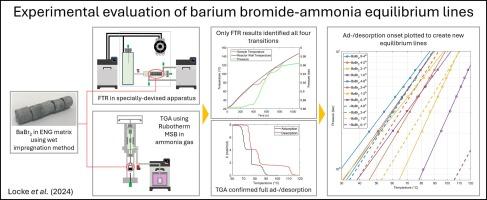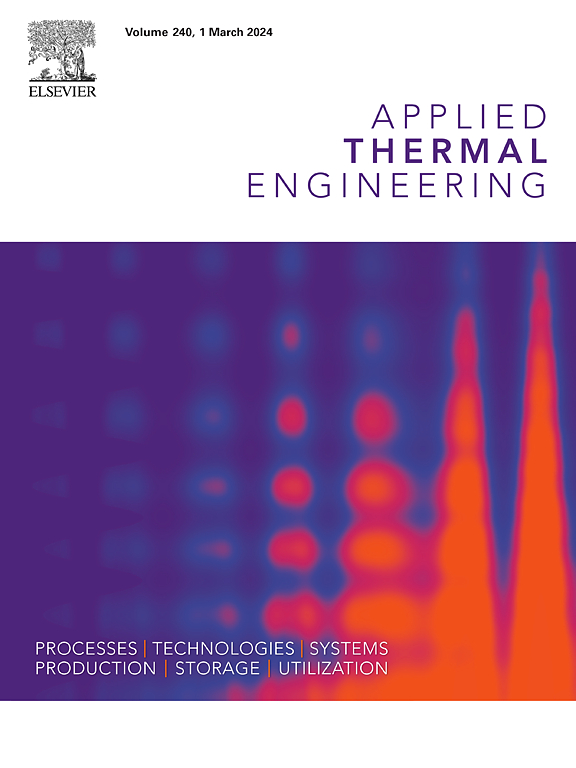Experimental evaluation of barium bromide-ammonia equilibrium lines
IF 6.1
2区 工程技术
Q2 ENERGY & FUELS
引用次数: 0
Abstract
This work has experimentally evaluated the position of thermochemical equilibrium lines of barium bromide (BaBr2) reacting with ammonia (NH3). BaBr2 samples, contained in discs of Expanded Natural Graphite, were placed in an experimental Large Temperature Jump rig and a new methodology, termed the Fast Temperature Ramp, was used to reveal adsorption and desorption reactions. Reaction onset points were plotted to generate equilibrium lines and calculate reaction enthalpies and entropies. Significant hysteresis between adsorption and desorption reactions was found, with the degree of hysteresis increasing as the salt becomes more deammoniated. The hysteresis effect was greatest for BaBr2(2–1) and BaBr2(1–0) reactions and also increased at higher pressures, exceeding 20 °C at 900 kPa for BaBr2(1–0). Adsorption reactions were found to occur over a very small temperature range, giving rise to a single transition ‘zone’ less than 20 °C wide. TGA experiments confirmed the position of equilibrium lines, although they were not successful in differentiating between two of the four ammoniated states. The close position of all equilibrium lines gives rise to a temperature ‘zone’ encompassing all four reactions, and in future work it may be advantageous to consider BaBr2 as a pseudo single-transition salt instead.

溴化钡-氨平衡线的实验评估
这项研究通过实验评估了溴化钡(BaBr2)与氨(NH3)反应的热化学平衡线的位置。将装在膨胀天然石墨圆盘中的 BaBr2 样品置于大温度跃迁实验装置中,采用一种称为快速温度斜坡的新方法来揭示吸附和解吸反应。绘制反应起始点以生成平衡线,并计算反应焓和熵。发现吸附和解吸反应之间存在明显的滞后现象,随着盐的脱氨程度增加,滞后程度也随之增加。BaBr2(2-1)和 BaBr2(1-0)反应的滞后效应最大,而且在压力较高时滞后效应也会增加,BaBr2(1-0)在 900 kPa 时滞后效应超过 20 °C。研究发现,吸附反应发生在很小的温度范围内,形成了一个宽度小于 20 °C 的单一过渡 "区域"。热重分析实验证实了平衡线的位置,但未能成功区分四种氨化状态中的两种。由于所有平衡线的位置都很接近,因此产生了一个包含所有四个反应的温度 "区域",在今后的工作中,将 BaBr2 视为假的单一过渡盐可能会更有利。
本文章由计算机程序翻译,如有差异,请以英文原文为准。
求助全文
约1分钟内获得全文
求助全文
来源期刊

Applied Thermal Engineering
工程技术-工程:机械
CiteScore
11.30
自引率
15.60%
发文量
1474
审稿时长
57 days
期刊介绍:
Applied Thermal Engineering disseminates novel research related to the design, development and demonstration of components, devices, equipment, technologies and systems involving thermal processes for the production, storage, utilization and conservation of energy, with a focus on engineering application.
The journal publishes high-quality and high-impact Original Research Articles, Review Articles, Short Communications and Letters to the Editor on cutting-edge innovations in research, and recent advances or issues of interest to the thermal engineering community.
 求助内容:
求助内容: 应助结果提醒方式:
应助结果提醒方式:


